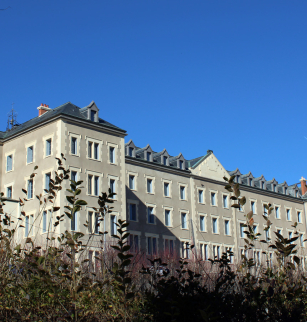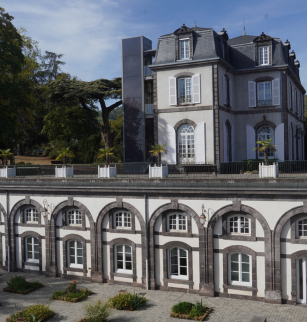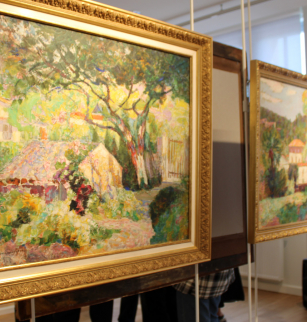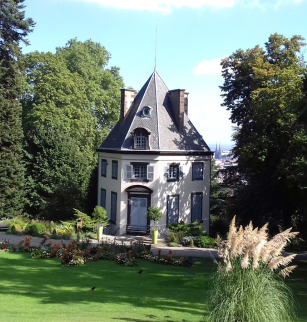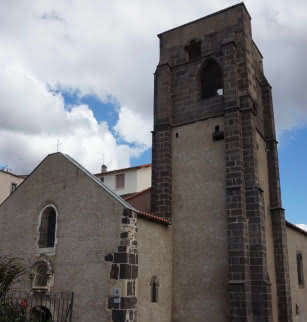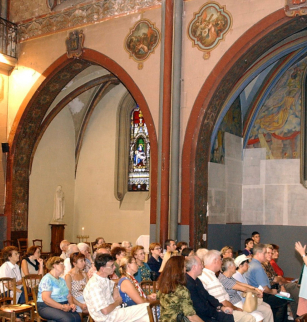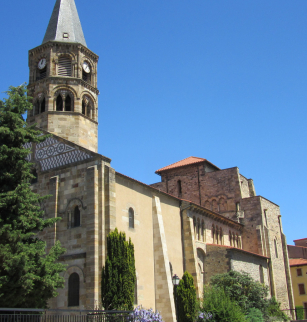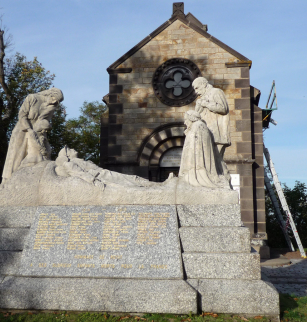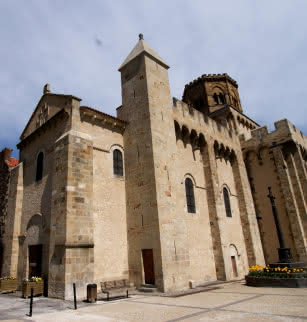Notre-Dame Church

Église Notre-Dame is from the late 10th century and was an important place of worship. It was listed as a historic monument.
Built in the late 10th century, the Église Notre-Dame is the only building remaining of the sanctuaries from the Middle Ages inside the fortified enclosure (Saint-Paul, Saint-Pierre, Saint-Jean-du-Marthuret, Sainte-Croix). Some vestiges of the Église Saint-Paul are still visible in Place Sully. Formerly a collegiate church, the Église Notre-Dame was managed by a chapter of around 12 to 16 canons until 1790.
The church was built from arkose and volcanic stone. In an elongated shape, it measured 35 metres long and 13 metres wide. The western side and the narthex, the oldest parts, date back to the 10th century. The vaults of the nave, the semi-circular apse with four radiating chapels and the deambulatory date back to the 12th century. The entrance, on the south façade, is preceded by a porch built in the 17th century. In 1679, major restoration works were undertaken, with renovation of the choir and its vaults. The bell tower was built in the 19th century to replace the former bell tower, destroyed during the Revolution.
The church was the site of worship of Saint Thecla recorded in the Middle Ages. During restoration, the saint’s relics were rediscovered, leading to a resurgence of piety. The stained-glass windows are the work of Émile Thibaud, a master glassmaker in Clermont-Ferrand (1862). The church retained a large collection of tomb stones, mostly from the 17th century, which represent the professions of the parishioners, including paper maker, carpenter, tailor and magistrate.
The church has been listed as a historic monument since 1840.
Opening dates and times
All year round, daily.
Services and equipment
| Equipment : | Parking nearby |
|---|
Prices
- Free access.








